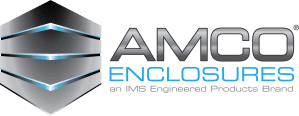 In a world that’s becoming more reliant on technology with each passing day, data centers are playing a more essential role than ever before. But because technology evolves so rapidly, IT data centers must keep up with these frequent changes. From the types of data racks you use in your center to the techniques you use to cool your technology, you’re probably accustomed to embracing each new trend. The following IT crazes will likely have a substantial effect on the types of equipment you use (like data cabinets and racks), as well as how they’re used in 2019.
In a world that’s becoming more reliant on technology with each passing day, data centers are playing a more essential role than ever before. But because technology evolves so rapidly, IT data centers must keep up with these frequent changes. From the types of data racks you use in your center to the techniques you use to cool your technology, you’re probably accustomed to embracing each new trend. The following IT crazes will likely have a substantial effect on the types of equipment you use (like data cabinets and racks), as well as how they’re used in 2019.
Edge Computing
As demands for technology increase, businesses have to come up with ways to bring computing to remote areas. Although 82% of companies have reportedly saved money by moving to the cloud, many providers find that it’s better to make the data centers and the clouds more mobile. In other words, the data storage and transfer can be done in a way that’s physically closer to where it’s needed, rather than having them housed in centralized locations, in order to prevent delays.
This means that mobile data centers and decentralized infrastructure will likely become more popular over the next year. This doesn’t necessarily mean that the traditional data center approach will become obsolete or that the types of server racks you’ve used will fall out of favor. However, it does mean that many businesses will have to embrace IT flexibility if they want to serve their customers.
Artificial Intelligence
Although American jobs aren’t really being replaced with robots just yet, the use of artificial intelligence is certainly on the rise. AI is often used to ensure that the monitoring and management of a center can become more efficient. It’s typically used for routine tasks that can be handled easily; this ensures accuracy without leaving any especially sensitive responsibilities to fall through the cracks. After all, AI-powered machines are impressive, but they are not yet perfected. AI-powered technology can gather information from various monitoring tools or other files, assess patterns, and identify problems or specific users. Eventually, they may be able to play an important role in the security of these facilities and their networks. While this won’t eliminate the need for human employees whatsoever, it can allow businesses to become more lean in their operations and permit employees to devote their attention where it’s really needed.
Resiliency Plans
Because we are more dependent on technology now than we were in the past, it becomes even more vital that businesses take steps to safeguard their IT centers and ensure their data can be protected should the worst occur. In the event of an intended hack or even a natural disaster, resiliency plans need to be executed to protect against data loss. Without these plans, service failures will likely increase. Interestingly, the negative effects of climate change can directly impact the functional abilities of these centers. Frequent cases of flooding and more violent storms, which can be linked back to global warming and overall climate change, can threaten center security and functionality. Therefore, it’s recommended that operators assess their facilities on a regular basis and develop plans that will protect infrastructure during these kinds of events.
In order for IT center operators to thrive, they must pay attention to emerging trends and adjust accordingly. Of course, having access to state-of-the-art equipment is the first step to ensuring facility success. For more information on how we can take your facility to the next level, please contact us today.
